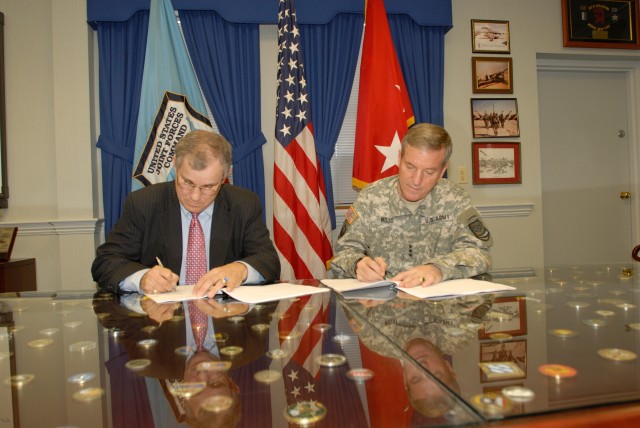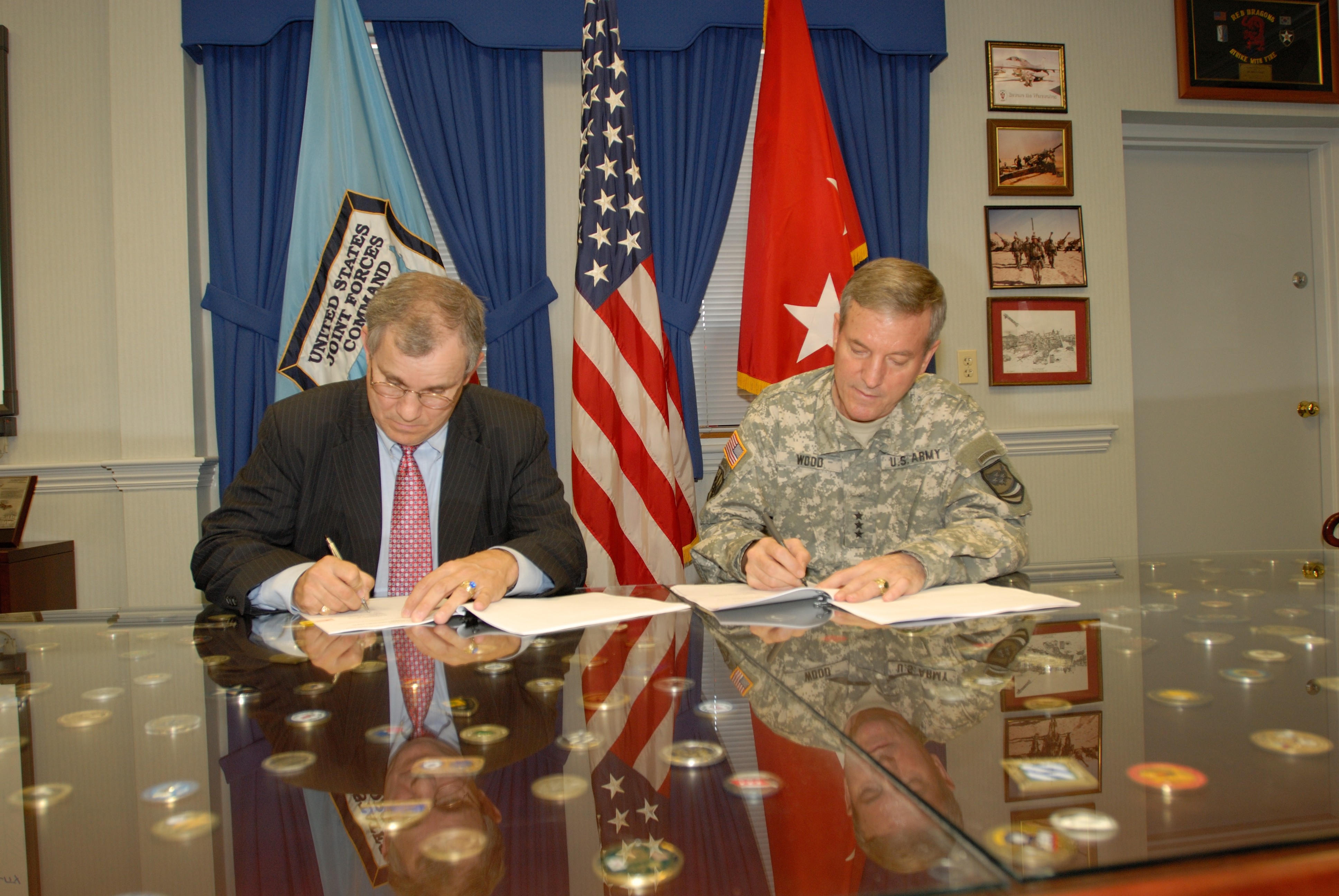
U.S. Joint Forces Command (USJFCOM) signed a cooperative research and development agreement (CRADA) today with Alion Science and Technology Corporation to improve the joint interoperability of modeling and simulation (M&S) tools.
A CRADA represents a non-Federal Acquisition Regulation legal agreement between USJFCOM and one or more non-federal parties, such as private industry and academia. CRADAs offer both parties an opportunity to share knowledge, personnel and facilities when conducting mutually beneficial research and development (R&D) while no funds are exchanged between the parties.
The CRADA between USJFCOM and Alion is a three-year cooperative agreement, with two one-year options focused on allowing different simulation engines to talk to each other, while maintaining the same level of consistency. The process of doing this is known as joint interactive validation.
USJFCOM Deputy Commander Army Lt. Gen. Bob Wood summed up what he thought was the greatest benefit to the joint warfighter to come from this CRADA.
"I think the ability to integrate modeling and simulation with a set of standards and common practices is something that's going to be most important to us," said the general.
Scott Wood, the Joint Advanced Training Technology Lab's live systems branch chief and principal investigator for this CRADA explained the purpose.
"The main objective is to do the validation. The second objective is to come up with a process to achieve that validation. The third objective would be to catalog that so you have a potential standard that's out there," he said.
Typically, when a warfighter uses two different platforms or federations together for training, the results aren't consistent when it comes to concept or resolution.
When a tank is shown firing in one simulation, but the target of the strike is in another simulation, it may look completely different in each simulation whether it's what the damage visually looks like or even displaying the actual strike at all.
The CRADA will look at these different platforms of M&S at different levels of concept or resolution and establish methods to validate, document and standardize simulation for the joint training environment. This will pave the way for a better level of consistency throughout M&S federations in the future.
"We really don't have a process to do that so part of what we're doing with this CRADA is looking for a potential process to check the interactions at the model level to validate that they are doing what you expect to happen at a real world replication of that synthetic environment," said Mr. Wood.
"After that you can start to catalog the interactions. This catalog can be standards-based to help find the standards that industry can use as they are trying to build joint models and simulation."
Ed Harvey, Alion's vice president and program manager for the CRADA, explained the benefit of such standards.
"Right now that kind of information isn't available and has not been documented," he said. "So what the power of this would be is if we document the interactions that need to occur for joint training and make it available to industry so people have a 'rule book' for their models to be suitable for joint training, which in turn would help the warfighter."
As part of the agreement, Alion will provide researchers with technical and management expertise to give insight into systems certification methodology. This increases the potential to use joint interoperability to build commercial products. Alion will also grant USJFCOM access to lab and conference facilities.
USJFCOM will offer Alion access to M&S environments, data and source codes, as well as access to the Defense Research and Engineering Network (DREN), designed for computational research, engineering, and testing.
Dr. Russ Richards, who heads the USJFCOM Office of Research and Technology Applications (ORTA), explained the CRADA's importance on joint training.
"The training community uses a federation of simulation models. They may have one model that represents the land battle, one that represents the sea battle, another one for the air battle. They're all going to have to work together if they're going to do a joint war fight, so the CRADA is taking a look at the validation of the interactions that take place in those models," he said.
"There's been a lot of effort in how you make those models exchange information with each other. What this CRADA is focusing on is making sure that when they exchange information, that the information makes sense to each of the models that's receiving it."
The agreement with Alion is the latest USJFCOM has signed since the Office of the Secretary of Defense delegated technology transfer authority to the command in 2005.
Other CRADA partners include Hewlett-Packard, Raytheon, Honeywell, Lockheed-Martin Corporation and SAIC.

Social Sharing